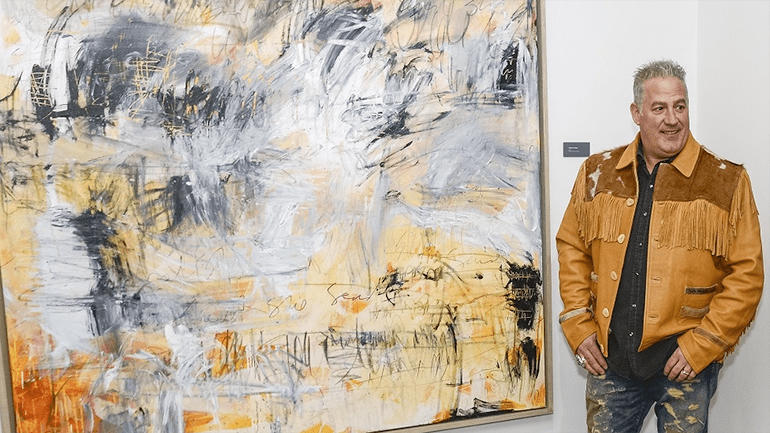While trying to describe the art of Tim Yanke, the one word that comes up again and again is “spontaneous.”
Yanke’s own brand of Abstract Expressionism is bold, energetic, and totally captivating. Whether he’s painting one of his trademark Neo-West scenes or a new interpretation of an American icon, Yanke always brings a refreshing sense of vitality and motion to his artwork.
Yanke once said, “My approach to painting is to maintain spontaneity. I approach every painting with the idea that I want that painting to continuously move—I want that painting to come to life.”

Recently, Yanke was kind enough to appear as a guest on Park West’s “Behind the Artist” podcast—once for a solo interview and once for a roundtable discussion with several artists.
During those recording sessions, Park West Gallery Director Morris Shapiro had the chance to ask Yanke about his artwork’s spontaneous charm. Here’s what he told us…
Would you say your artwork is pretty much instinctual or is it just coming out as you’re creating it?
Tim Yanke: It’s extremely organic. Now, when there’s content involved, like a dragonfly or headdress, yeah, obviously there’s a point of destination that I have in my mind, but in regards to how I’m going to get there, the variety in the avenues change.
When I’m thinking about creating an abstract, colors may just come into my head—like deep blues or purples, for example—and I really start to see an image forming.

Then I’ll go paint it and realize that I want some brilliant oranges to come through. I’ll start laying down the base colors. Next thing you know, I don’t even reach the deep blues. The painting goes into a life of its own.
… I get so sidetracked or maybe I took a completely different train. I knew what the destination was, I knew what train to get on, but when I ended up someplace totally different. I’m thinking, “Wow, that’s invigorating.”
When you walk into one of our own art shows and you look at your paintings, do you ever feel that you would like to do more work on them? Do they feel finished?
Tim Yanke: When it’s just visually hitting on all cylinders and it’s there compositionally, and it’s got flow, it’s got movement. It looks like it’s music. It looks like it’s playing. I step back and I say, “I nailed it.”
There hasn’t been an event or a cruise that I went on where I walked in said, “Oh, I really missed that.” Every painting I look at, I’m good with it. It’s done. … So far, I’m batting a thousand, I think they’re all done, so I sign it and I’m good.

Describe for me what it feels like when you show your artwork to people and they respond so positively to it and want to collect it and want to embrace it.
Tim Yanke: It’s mind-blowing that somebody will get so emotionally attached to something that you did. I think it’s beautiful. I’ve had it before where they come out crying. “Whatever it is about this painting, I love it” or “it reminds me of my mother” … “I don’t know what it is. I just have to have it” and they’re so moved by it. It’s awkward to me, though, because I don’t take compliments well. I’d rather just redirect attention to something else.

I’m just a painter and sometimes I go and tell [my wife] Nicky, “Wow, these people were so moved or they fell in love with this painting, I can’t believe it.” It’s so cool that people adhere to your work. You know what I mean? It’s a byproduct of something we do that we love and yet, man, it hits hard to these people. It’s like writing a song and they’re all singing along to it at a concert.
They’re putting this art in their homes. They’re putting it on their walls. I think that is really, really cool. I feel uncomfortable because I don’t know how to handle it … I feel I do something well that I love. I rely on my passion more than my chops to do it. To get accolades and receive accolades like that, I need to get better about it. I really do.

